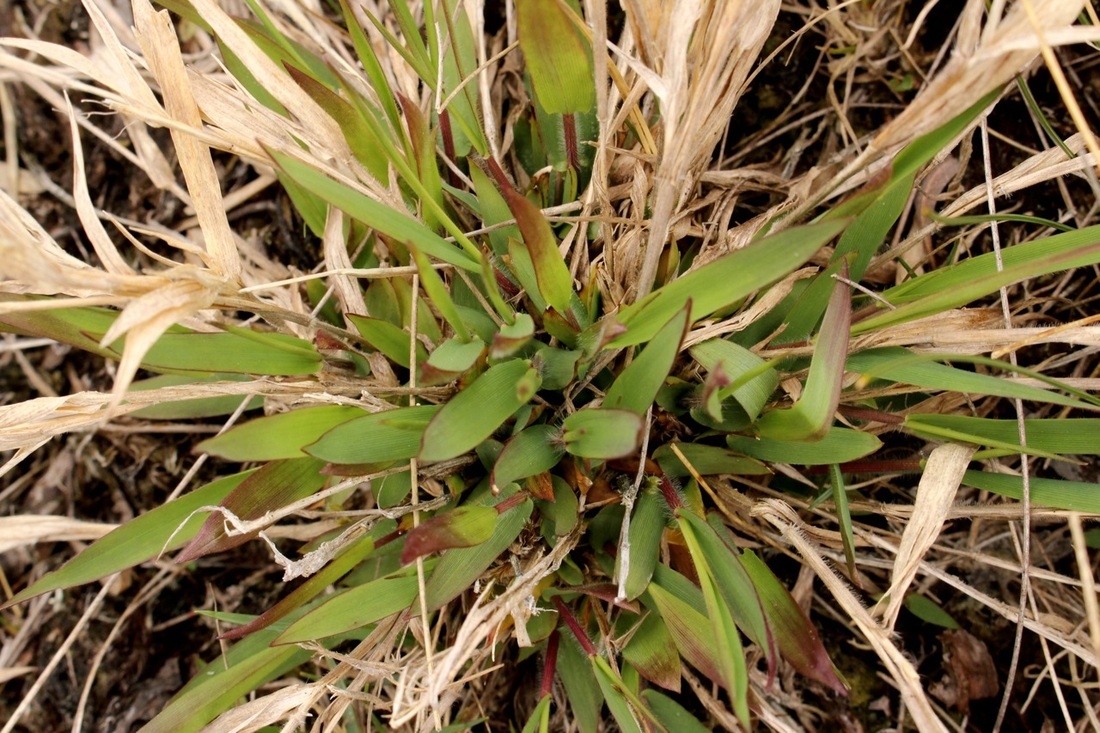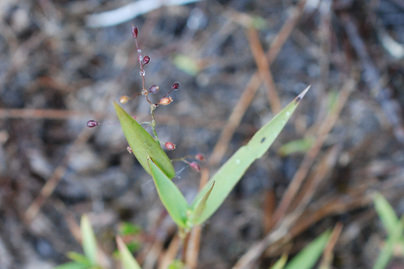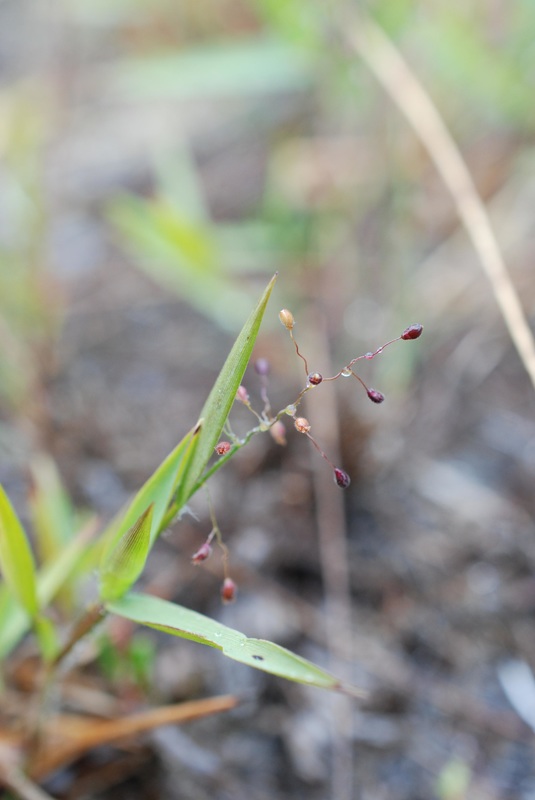Western panicgrass, hairy rosette panic-grass, western witchgrass • Dichanthelium acuminatum
Identification
This perennial grass grows from a fibrous root to a maximum height of 50 cm, though it is often smaller. Stems start out unbranched in spring, and as spring and summer progress the stems branch to varying degrees, becoming prostrate or spreading by late summer. The stem is hairy and often reddish brown with alternating, bluish-green leaves with hairs fringing the edges. Western panicgrass has smaller basal leaves than stem leaves; fhe stem leaves have strong parallel veins and hairy sheaths at the base. The inflorescence is an open panicle, 3-9 cm long and wide. This species is also known as hairy rosette panic-grass for its rosette basal growth pattern and hairy leaves, sheaths, and stems.
Habitat & Range
Western panicgrass grows all over North America in dry to wet areas. It tends to grow in disturbed habitats, and may appear commonly in areas impacted by humans. It can also appear in most other habitat types, from grasslands and meadows to river banks and woodlands.
Similar Species
Western panicgrass is a fairly distinctive species of grass. Its short stature and broad, alternating stems leaves make it difficult to confuse with many species.
iNaturalist
https://www.inaturalist.org/taxa/128949-Dichanthelium-acuminatum
This perennial grass grows from a fibrous root to a maximum height of 50 cm, though it is often smaller. Stems start out unbranched in spring, and as spring and summer progress the stems branch to varying degrees, becoming prostrate or spreading by late summer. The stem is hairy and often reddish brown with alternating, bluish-green leaves with hairs fringing the edges. Western panicgrass has smaller basal leaves than stem leaves; fhe stem leaves have strong parallel veins and hairy sheaths at the base. The inflorescence is an open panicle, 3-9 cm long and wide. This species is also known as hairy rosette panic-grass for its rosette basal growth pattern and hairy leaves, sheaths, and stems.
Habitat & Range
Western panicgrass grows all over North America in dry to wet areas. It tends to grow in disturbed habitats, and may appear commonly in areas impacted by humans. It can also appear in most other habitat types, from grasslands and meadows to river banks and woodlands.
Similar Species
Western panicgrass is a fairly distinctive species of grass. Its short stature and broad, alternating stems leaves make it difficult to confuse with many species.
iNaturalist
https://www.inaturalist.org/taxa/128949-Dichanthelium-acuminatum
References
Dichanthelium acuminatum (Sw.) Gould & C.A. Clark. Go Botany. New England Wild Flower Society. Accessed 26/08/2014.
Dichanthelium acuminatum (Sw.) Gould & C.A. Clark. In Klinkenberg, Brian. (Ed.). E-Flora BC: Electronic Atlas of the Plants of British Columbia. Lab for Advanced Spatial Analysis, Department of Geography, University of British Columbia, Vancouver. Accessed 26/08/2014.
Authors and editors of page
Nancy Shackelford, Kelly Fretwell, and Brian Starzomski (2014).
Dichanthelium acuminatum (Sw.) Gould & C.A. Clark. Go Botany. New England Wild Flower Society. Accessed 26/08/2014.
Dichanthelium acuminatum (Sw.) Gould & C.A. Clark. In Klinkenberg, Brian. (Ed.). E-Flora BC: Electronic Atlas of the Plants of British Columbia. Lab for Advanced Spatial Analysis, Department of Geography, University of British Columbia, Vancouver. Accessed 26/08/2014.
Authors and editors of page
Nancy Shackelford, Kelly Fretwell, and Brian Starzomski (2014).







